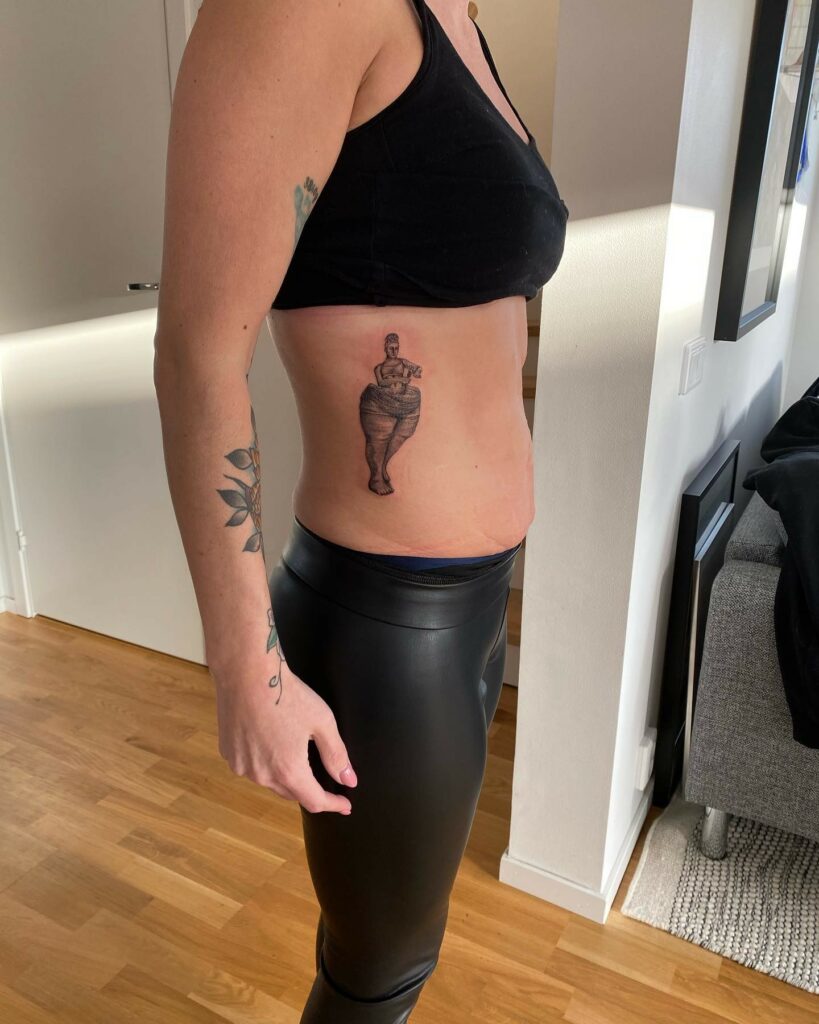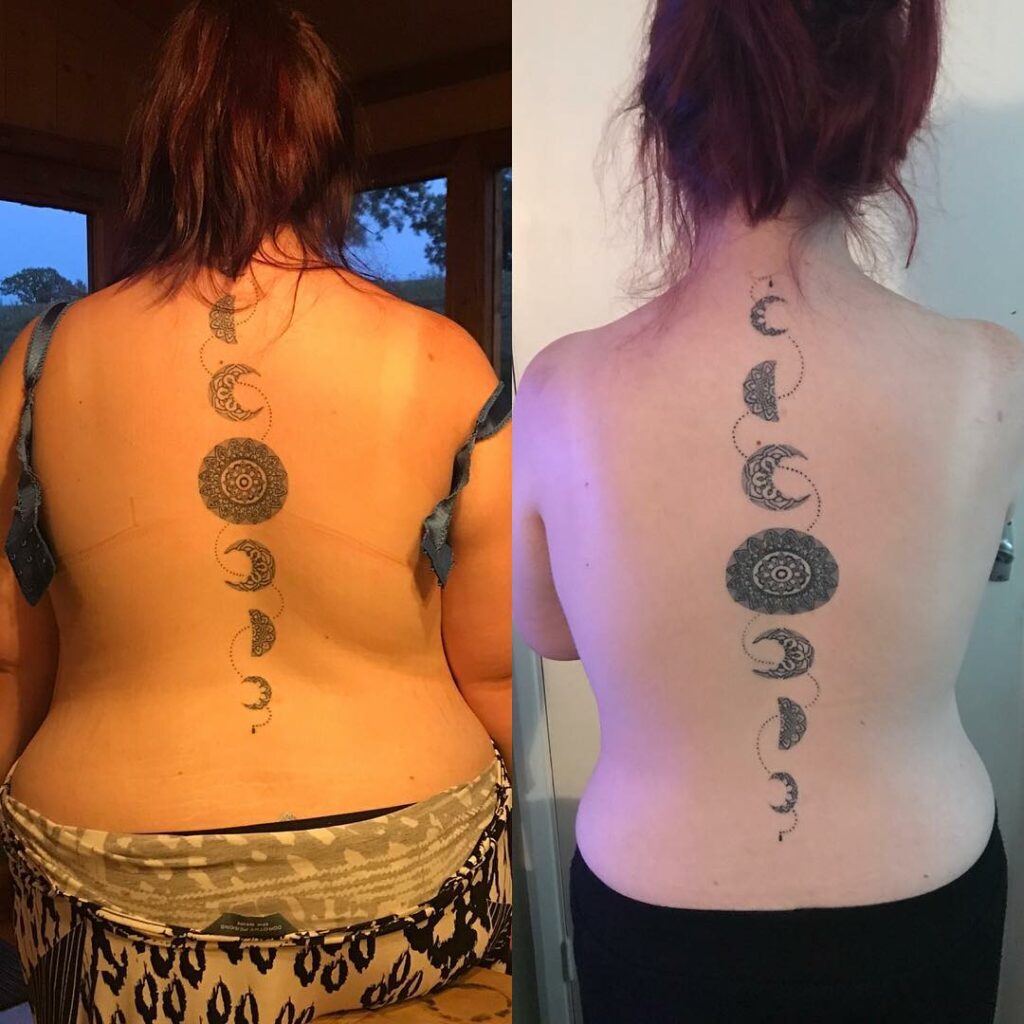Table of Contents
Today, we’re taking a slightly different turn down the curvy paths of body transformation, a subject I get quizzed about more than you’d imagine. Ever pondered the question: “What happens to my vibrant phoenix or that intricate Maori sleeve if I lose a couple of pounds?” Well, I’ve got your back, and front, and well, every bit of skin you’ve got. In this post, we’re going to dive into the nitty-gritty of exactly how those physical changes impact your body art. We’ll explore the wonders of elasticity, the magic of skin, and everything you need to know to manage, predict, and deal with the evolution of your tattoos through weight loss.
Whether you’re planning to hop on the weight-loss bandwagon, just a curious tattoo lover, or you’re genuinely worried about the fate of your beloved ink as your body transforms, I promise this will be an enlightening voyage. You’ll learn what to expect, how to mitigate any potential issues, and how to ensure your tattoos continue to shine as you shed pounds. So, let’s roll up our sleeves (inked or otherwise), and delve into the fascinating fusion of body art and body transformation. Let’s ink and shrink, shall we?
How Can Weight Loss Affect Tattoos?
Tattooing is a delicate dance where the ink dives deep into the dermis layer of your skin, embedding your chosen design within. Now, the skin’s state at the time of this dance plays a significant role in how the final performance turns out. Various factors could play spoil sport – with rapid weight changes being one of them.

Take it from me, folks, I’ve been on both ends of the needle. I’ve watched the contours of my own body and its inked stories shift with my pregnancy and postpartum weight loss. Tattoos may go a bit off-kilter with substantial weight fluctuations. They could appear saggy, stretched, faded, or misaligned due to the skin’s miraculous ability to expand and contract. But remember, tattoos can’t quite match this flexibility.
How to Minimize Tattoo Distortion After Weight Loss
Here’s the scoop – tattoos on your belly, upper arms, and thighs are most susceptible to weight loss related changes. These are our softer, cushier spots that love to hold on to that extra fluff. Small tattoos feel this change more intensely, and fixing them can be quite a puzzle. Now, this is not to say that larger tattoos won’t change. I once had a client whose extensive back piece needed some artistic additions and adjustments after her incredible 50-pound weight loss journey.
Slow and steady wins the race, my friends! Slow weight loss gives your skin time to naturally contract and adapt to your shrinking form. Rush it, and you could end up with saggy, wrinkled skin that makes your once proud tattoo look quite forlorn.
Hydration, hydration, hydration! It’s your skin’s best friend and a key ally in preserving your tattoo’s vibrancy. So guzzle that water like it’s going out of style.

How Can Weight Gain Affect Tattoos?
Let’s flip the coin now, shall we? Weight gain, whether intentional or not, affects your tattoos too. You might notice your ink stretching out, morphing shape, especially if your design is intricate or symmetrical. Large tattoos covering a vast area might undergo more noticeable changes.
If you’ve been building those guns at the gym and noticed your sleeve tattoo shifting slightly, you’re not alone. One of my regulars, a fitness enthusiast, saw his tribal sleeve tattoo morph subtly as he bulked up.
Stretch marks – they’re like your skin waving a little white flag saying, “That’s all I can handle, folks!” Stretch marks might scatter your ink particles, causing some portions of your tattoo to fade or disappear. It’s like a pesky interruption in your tattoo’s narrative. You can always tattoo over stretch marks, but remember, the area might be a bit more sensitive.

How to Minimize Tattoo Distortion After Weight Gain
Weight gain often stretches your skin more than weight loss, leading to potential tattoo distortion. If you’re intentionally bulking up, remember – slow and steady does it. Speeding up weight gain could lead to stretch marks, and nobody wants those silent tattoo saboteurs.
A key weapon in your tattoo care arsenal? Moisturizer. I swear by After Inked Tattoo Aftercare Lotion – it’s a vegan marvel that keeps your tattoo hydrated and itch-free. From day one of the healing process, this lotion works wonders in reducing healing time and preventing scabbing.
My Tattoo Has Changed, What Should I Do?
If your tattoo has already braved the waves of weight change, you might be left pondering what to do. My first advice – get in touch with your tattoo artist or, ideally, the original creator of your piece. They can advise on possible touch-ups or even a coverup.
Remember, folks, tattoo changes due to weight fluctuations can be minimized with careful management. Treat your body and your tattoos with kindness, and your art will continue to express your vibrant story, no matter the shape or size of the canvas.

Conclusion
In the dynamic dance of skin and ink, understanding how weight changes can impact your tattoos is pivotal. As a seasoned tattoo artist, my advice is to select tattoo placement carefully if you anticipate significant weight fluctuation. Arms, calves, and shoulder blades tend to be more resilient areas. If you’re thinking about a smaller piece, be aware that these can be trickier to adjust if your weight changes significantly. Tattoo costs vary widely, depending on size, complexity, and the experience of the artist, but expect to invest anything from $50 to several hundreds, even thousands, for larger, intricate pieces.
As with any modification to our bodies, tattoos come with potential side effects and risks, including allergic reactions, skin infections, or granulomas. It’s crucial to choose a professional, reputable tattoo artist and follow aftercare instructions to the letter. Tattoos are more than just a design on your skin; they are a commitment, a personal narrative. As we transform, so do our tattoos. It’s all part of the vibrant, unfolding story of our beautifully unique bodies. So go forth, my friends, with fresh knowledge and fierce confidence. Embark on your tattoo journey with eyes wide open, ready to embrace every shift and swirl of your evolving inked story.




